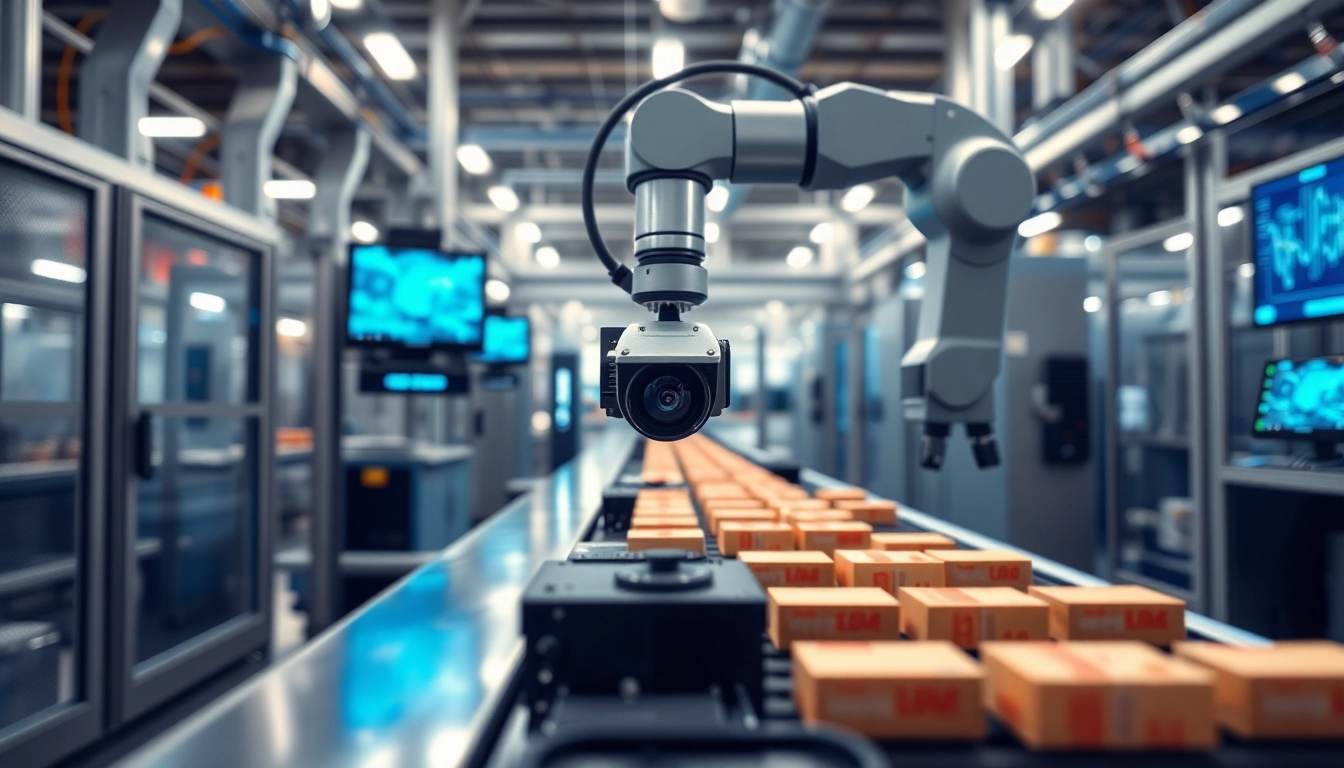What is Machine Vision?
Definition and Core Concepts
Machine vision refers to the technology and methods used to enable machines to interpret and understand visual information from the world around them. Essentially, it allows machines to “see” and make decisions based on visual data input, mirroring human capability in many ways. This technology encompasses a variety of solutions, integrating high-resolution cameras, software algorithms, and processing units to capture, analyze, and act upon visual data. Machine vision systems are increasingly essential across various industries, serving applications such as quality control, robotic guidance, and even autonomous vehicles.
History and Evolution of Machine Vision
The roots of machine vision trace back to the early 1960s when engineers began exploring ways to automate inspection and improve quality control in manufacturing processes. Initially, these systems were primitive and relied heavily on simple image processing algorithms. Over the decades, advancements in computing power, sensor technology, and artificial intelligence have dramatically transformed machine vision capabilities. Today’s systems employ complex algorithms, including deep learning, allowing them to recognize patterns, learn from new data, and improve over time without direct human intervention.
Key Technologies Behind Machine Vision
Several key technologies underpin machine vision, including:
- Imaging Sensors: High-quality CCD or CMOS sensors capture images required for analysis.
- Lighting: Proper illumination is crucial for capturing high-quality images. Advanced lighting techniques, including LED and laser lighting, help reduce shadows and enhance features.
- Image Processing Software: Sophisticated algorithms analyze captured images for defects, measurements, and various other parameters. These include pattern recognition, object detection, and classification.
- Artificial Intelligence: AI and deep learning models can learn from data, leading to improved accuracy in recognizing issues and anomalies.
Applications of Machine Vision
Automated Inspection and Quality Control
One of the primary applications of machine vision is in automated inspection and quality control. It allows manufacturers to inspect products consistently and rapidly, ensuring that any defects or deviations from standards are identified early in the production process. This capability significantly reduces human error and improves overall product quality.
For instance, in the automotive industry, machine vision systems are employed to inspect welds, measure parts, and ensure that assembly processes meet precise specifications. They can identify issues that might be invisible to the naked eye, thus preventing defective products from reaching the market.
Robotics and Autonomous Systems
Robots equipped with machine vision capabilities can perform intricate tasks that require visual input and feedback. Autonomous vehicles rely heavily on machine vision to detect obstacles, differentiate between road signage, and identify safe navigation routes. This visual processing is crucial for the vehicle’s awareness of its environment, enabling it to make real-time driving decisions.
Moreover, in logistics, robots utilize machine vision for tasks such as automated sorting and inventory management, enhancing operational efficiency within warehouses.
Healthcare and Medical Diagnostics
Machine vision is also making strides in healthcare, particularly in medical diagnostics. Imaging systems that utilize machine vision can analyze medical images—such as X-rays, MRIs, and CT scans—providing healthcare professionals with accurate assessments of a patient’s condition. By employing machine learning algorithms, these systems can enhance image clarity, assist in detecting tumors, and even predict disease progression.
For example, advancements in machine vision have enabled researchers to develop software that can analyze histopathological images to detect cancerous cells with high precision, thus aiding pathologists in making more informed diagnoses.
Machine Vision vs Computer Vision
Understanding the Differences
While the terms “machine vision” and “computer vision” are often used interchangeably, they represent different concepts. Machine vision primarily refers to the use of technology in industrial settings for tasks such as inspection, measurement, and quality control. On the other hand, computer vision is a broader field that encompasses not just industrial applications, but also advancements in artificial intelligence that enable machines to interpret and understand visual inputs in various contexts, including surveillance, augmented reality, and more.
Use Cases in Industry
Both machine vision and computer vision have critical roles in industry. For example, while machine vision technologies are utilized in factories for quality assurance, computer vision applications can be found in the realms of autonomous driving, facial recognition technologies, and real-time video analytics. This distinction, while subtle, helps clarify the scope of each field and emphasizes the diverse applications of visual data processing.
Integration and Collaborations
Integrating machine vision systems with computer vision technologies can yield powerful results. For instance, collaborative robots, or cobots, that are equipped with both machine vision and computer vision capabilities can interact more naturally with humans while performing complex tasks. This integration can enhance overall productivity and exemplify the confluence of industrial automation and intelligent systems.
Implementing Machine Vision Systems
Choosing the Right Hardware and Software
The successful implementation of machine vision systems begins with selecting the right hardware and software. Factors to consider include the specific application requirements, the environment in which the system will operate, and budget constraints. Choosing quality imaging sensors, appropriate lighting, and powerful processing capabilities are crucial for the effectiveness of machine vision systems.
Moreover, the software used for image processing must be adept at handling the specific types of analysis required, whether it’s defect detection, pattern recognition, or 3D modeling. Investing in robust software tools that can adapt to different tasks is essential for long-term operational success.
Best Practices for Deployment
Implementing machine vision systems requires careful planning. Key best practices include:
- Conduct a Needs Assessment: Understand the specific requirements of your application before selecting technology.
- Pilot Testing: A pilot phase can help identify potential issues early in the deployment process and provide insights into system adjustments.
- Training Staff: Ensuring that staff members are adequately trained in using the machine vision system is critical to maximizing its capabilities.
- Continuous Evaluation: Regularly assess system performance to ensure it meets production goals and quality standards; this may include updating software and recalibrating hardware.
Common Challenges and Solutions
Several challenges can arise during the implementation of machine vision systems, including issues with lighting conditions, image resolution, and hardware malfunctions. For instance, poor lighting can lead to unclear images, affecting detection accuracy. Using adaptive lighting solutions can solve this problem.
Additionally, ongoing maintenance is vital to keeping systems running efficiently. Establishing a scheduled maintenance protocol helps in avoiding unexpected downtime and maintaining quality standards.
The Future of Machine Vision
Emerging Trends and Innovations
The machine vision landscape is rapidly evolving, driven by advancements in artificial intelligence, deep learning, and edge computing. In the coming years, we can expect to see more decentralized processing, where data is analyzed closer to the source, leading to faster response times and reduced bandwidth usage.
Moreover, as industries increasingly adopt automation, machine vision will play an integral role in the development of smart factories, where interconnected devices collaborate to optimize production processes continuously.
Impact of AI and Deep Learning
The integration of AI and deep learning into machine vision systems is transformative. Machine learning algorithms can improve the accuracy and speed of image analysis, enabling systems to learn from new information and adapt to changes in production processes. For example, systems that continuously learn from their operational environment can adjust to shifts in product designs or manufacturing techniques without requiring extensive retraining.
Market Predictions and Industry Growth
The demand for machine vision solutions is anticipated to grow significantly across numerous sectors, including manufacturing, healthcare, automotive, and logistics. According to market research, the global machine vision market is expected to reach billions in revenue over the next few years. This growth is characterized by an increasing focus on automation, the need for higher production quality, and the desire for greater efficiency within operational processes.



